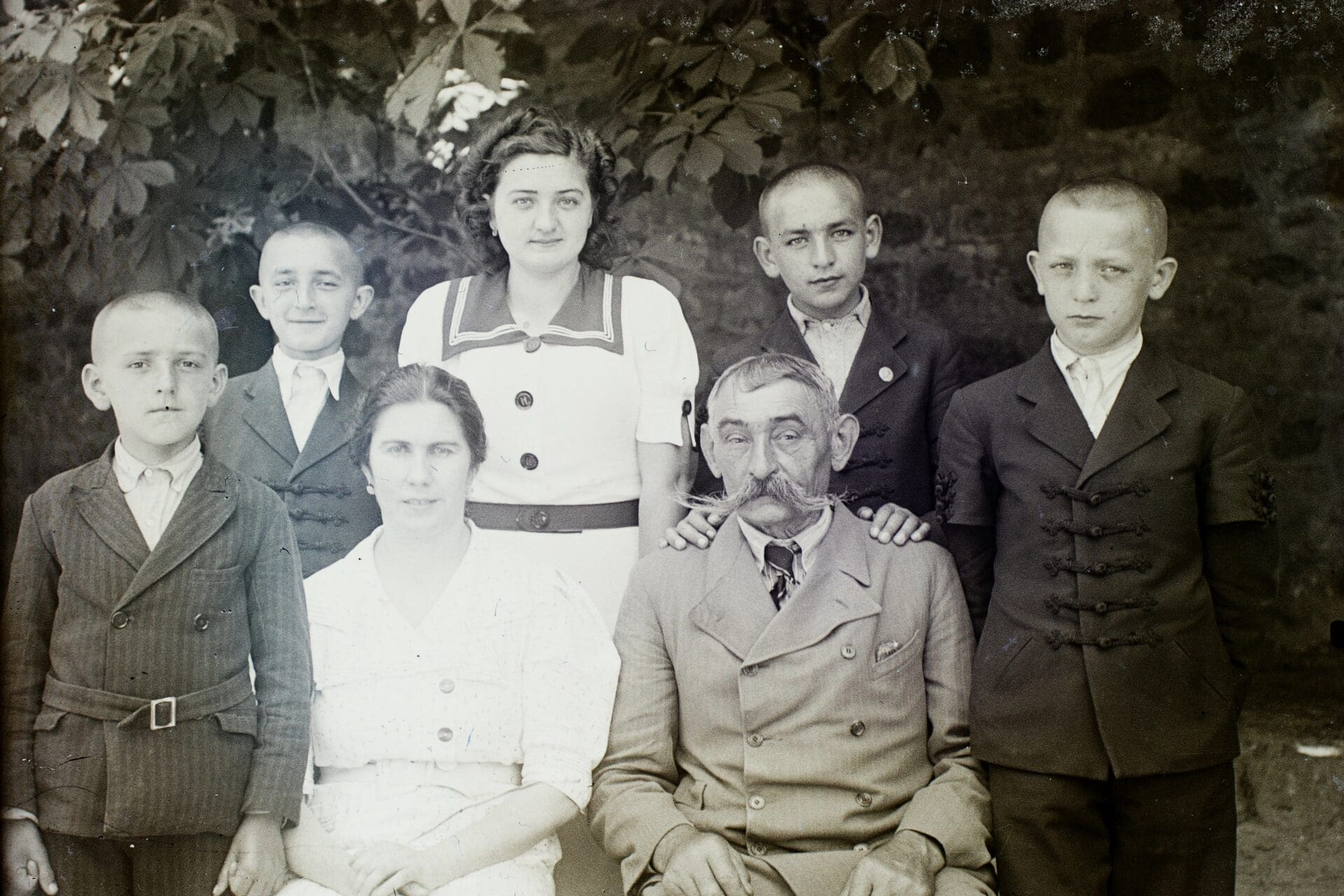Historical literature has repeatedly pointed out that the new faces of the Horthy regime were the generation of the pre-1918 elite.[i] István Milotay, in a 1921 issue of the right-wing Szózat, gave the most incisive description of the generational conflict, which deserves to be quoted at length. He described his generation, which he called ‘still in the barracks with one foot’, as follows:
‘Not in a thousand years had a Hungarian generation go to such a school as ours did. Our generation has lived more, seen more, and learned more in five years of the mysteries on which Shakespeare’s Danish prince pondered than two or three generations before it could in a century. Tens of thousands of this youth rose from the school benches and went into the sufferings of war, the physical, mental and moral trials of the trenches, the field hospitals, the prison camps of Siberia and exile. The horrible experiences of two revolutions turned these boys into men—if not cripples or dead men lying on the side of the road of martyrdom. This youth left the old, quiet Hungary behind, a country which used to be happy in its own way. By the time they returned from the war fought for their fathers’ legacy, another generation had ruined this legacy behind their back and left to them this mutilated Hungary, with all its political, social, economic and moral misery: unsolvable problems, a divided soul, and the pillaged, crumbling material conditions of life.’[ii]
In Milotay’s later best-selling book, the Ismeretlen Magyarország (Unknown Hungary), he added that his generation longed to ‘move on from ’the old liberal ideology’, to break away from the ’old, familiar, patriarchal’ atmosphere: ‘the air around them had become so combustible, the world had changed so much, they were so caught up at every step in the cares and tasks of the new life, that they could not escape them even if they wanted to.’ The conflict between fathers and sons, ‘between the new world and the old, is tense,’ he wrote.[iii]
Gyula Szekfű, the great conservative historian, once wrote a famous book called Három nemzedék (Three Generations). The three generations he described were the first great liberal Hungarians, the elite of the Austro-Hungarian period that followed, and the radicals who tore it all down. Milotay, 38 years old in 1921, swelled the ranks of older, nationalist publicists. It is telling that the 37-year-old Lehel Kádár, was referred to as ‘the grand old man’ among them.
Journalist and member of parliament István Lendvai, an emblematic figure of the Horthy era, however, was only 33 years old in 1921, and was in his late twenties during the First World War—he barely fit into the ranks of the ‘third generation’, being almost a member of the fourth, the generation that was supposed to rebuild the country after the devastation of the war and the revolutions. As Lendvai put it,
‘the previous generation had destroyed 1000 years of work in 50 years’, and his contemporaries ‘watched helplessly’,
‘through a haze of gunpowder and blood’, as the hinterland disintegrated.[iv] In his writings, Lendvai sought to reckon with both ‘Geszt’—the family seat of István Tisza—and ‘Lemberg’, the home of ‘Syrian jackals’ (i.e. Galician Jews), which stood for everything that was to blame for Hungary’s downfall.[v] Although he himself did not serve in the First World War, the experience of frontline fighting was very much a defining factor for the journalists and politicians who provided the intellectual and power background of the counter-revolution: ‘this youth was not raised by the fathers of today, but by the death fields of Galicia and the Balkans, by the hell of Doberdò’ [the scene of a two-and-a-half-year trenchwar between the Austro-Hungarian and Italian armies], one nationalist summed it up neatly.[vi] The radical university newspaper Ifjak Szava (The Word of the Youth) warned in the autumn of 1919: ‘Do not think that you are dealing with the old youth’, because ‘today’s youth has been trained by the Five-Year War to be strong, Christian, Hungarian and—socialist.’
Endre Zsilinszky, also 37 at the time, summed up his experiences of the First World War in his own newspaper in 1928. In Galicia, in the summer of 1916, Czech soldiers under his command [Zsilinszky was serving as a volunteer officer] threatened to have the deserters executed, at which point the Czechs were pulled back and replaced with Hungarian troops, half of whom were killed that day. ‘I lacked the decisiveness and the ruthlessness to act quickly, even though what was at stake was the greatest of all: Hungarian life. These were the bitter lessons I learned of heaven and hell, life and men; I owe my most precious and most intimate knowledge of Hungary and of myself, the certain and involuntary setting of my life’s purpose, to my fighting in the war,‘ Zsilinszky wrote.[vii]
And the new generation was not ungenerous with curses when it came to criticising their fathers. ‘The old man of liberalism is everywhere,’ Lehel Kádár began his scolding. ‘You cannot get rid of him. He’s there in the National Assembly, talking about law and order…He’s in the bank and he’s in the Jewish club. He shakes his head when he hears the blood of the new generation, he shakes when anger turns into action, he is outraged when Jewish interests are hurt.’ This generation was the ‘generation of liberalism’, ‘a generation that took everything from us’, but now the ‘new generation’ has come. ‘I fear they will live forever,’ he sighed at the end of his article.[viii] In order to get rid of the sins of the fathers, Kádár advocated for a ‘complete separation’ from the fathers, leaving behind their ‘misguided childhoods’ and, of course, the Jews they were brought up with.[ix]
The attacks on the ancestors also had a self-exculpatory character: ‘Fathers cannot hold their sons responsible for their own sins,’ Milotay argued.[x] The elderly, in turn, were either defensive about their liberal traditions or tried to assimilate to the young. Bishop Ottokár Prohászka, who was 63 years old and on the borderline between the first and second generation, agreed with them, according to Milotay’s recollections, that not only the traces of the 1919 Soviet Republic and the 1918 Károlyi Revolution, but also those of the Tisza-system had to be erased: ‘Were we preaching some conservative, reactionary, mouldy, anti-people policy? Of course not. We were as opposed to the old Hungary, its capitalist liberalism and feudalism, as we were to the revolutionary fronts of Jewish radicalism or Marxist social democracy.’ He agreed with Prohászka that ‘if our counter-revolution will become that of the great and noble lords, we might as well go home.’[xi] The Jesuit paper A Szív (The Heart) was certain, in light of the social tensions of the time, that despite all the horrors of the communist dictatorship, ‘we cannot restart where we left off in 1914.’[xii] Or, as an article in Szózat said at the end of 1920, ‘We want the old Hungary, but without the flaws of the old Hungary.’[xiii] Prohászka even distanced himself from his contemporaries when speaking in front of a nationalist crowd in Cegléd:
‘Although I am not of today’s generation, I say that you should not trust my generation infected with liberalism.’[xiv]
But the truth is that it was not only the second generation, but also the first that was the subject of harsh criticism. The young radicals regarded former prime minister Sándor Wekerle, who died in the summer of 1921, but also minister Gyula Andrássy Jr. and conservative politician Albert Apponyi as ‘lackies of the Jews’, as racialist Sándor Kiss put it at the second national conference of the ÉME, an extreme-right, racialist movement founded in 1918.[xv] ‘Kossuth and his liberal ideologues let the horror out of the bottle,’ the local paper of Cegléd, the town where Lajos Kossuth, ‘the father of the nation’, had begun his recruiting tour in 1848, wrote in 1922.[xvi]The same article also noted that ‘If Baron József Eötvös had surprised the country with a numerus clausus instead of Jewish emancipation, we would not be where we are today.’[xvii]
It is also interesting to note that while these generational differences pushed one group of young men into the camp of the contemporary nationalist right, that did not necessarily determine their later life choices. Zsilinszky (changing his name to Bajcsy-Zsilinszky) became a hero and martyr of the anti-Nazi resistance, just as Lendvai did. Milotay, on the other hand, supported the Nazis and the Arrow Cross until the last moment, and died in emigration, still supporting the lost cause. Generational experiences did define men to some extent—but it was political and moral choices that had the final say.
[i] Balázs Ablonczy, Teleki Pál, Budapest, Osiris, 2005, 169.; István Gyurgyák, Magyar fajvédők. Eszmetörténeti tanulmány, Budapest, Osiris, 2012, 13.
[ii] Szózat, 17 Apr. 1921.
[iii] István Milotay, Az ismeretlen Magyarország, Budapest, Genius, 1930, 36, 39.
[iv] Personal papers of István Lendvai.
[v] Gyurgyák, ’Magyar fajvédők’, 157.
[vi] Hazánk, 10 Apr. 1921.
[vii] Előőrs, 1928/2.
[viii] Hazánk, 20 Nov. 1921.
[ix] Hazánk, 1 May 1921.
[x] Magyarság, 10 July 1921.
[xi] Egyedül Vagyunk, 1940/4, 1940/5 and 1940/6.
[xii] A Szív, 24 July 1920.
[xiii] Szózat, 16 Oct. 1920.
[xiv] Czeglédi Keresztény Hírlap, 12 Nov. 1922.
[xv] Zsidó Szemle, 20 May 1921.
[xvi] Czeglédi Keresztény Hírlap, 30 July 1922.
[xvii] Czeglédi Keresztény Hírlap, 23 July 1922.








